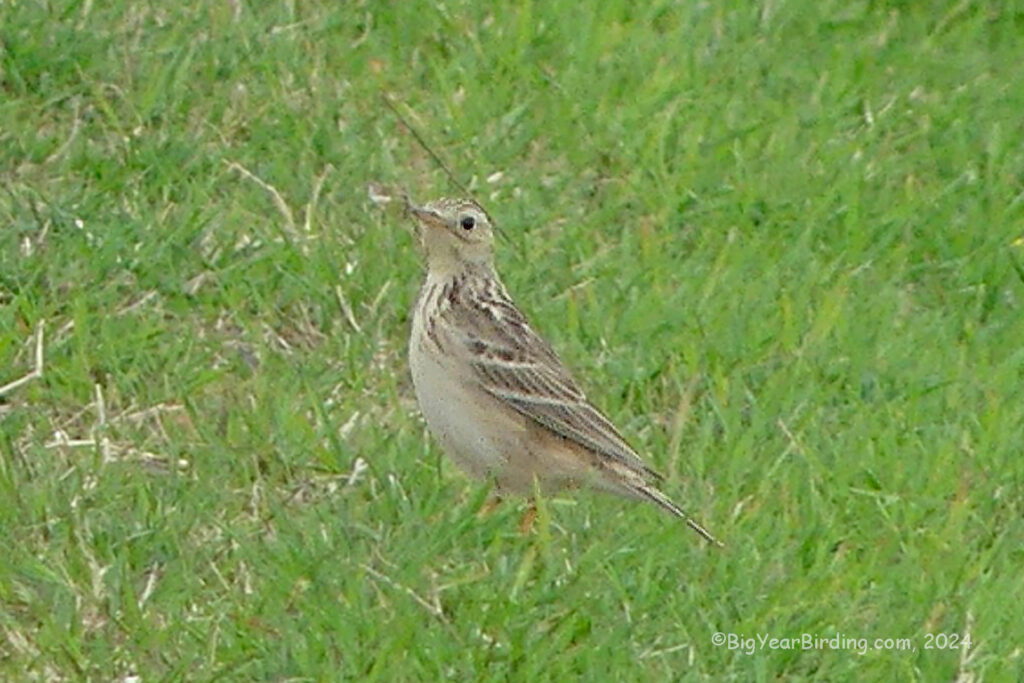
The Sprague’s Pipit (Anthus spragueii) is a small, secretive bird native to the grasslands of North America. Measuring approximately 5.5 to 6.3 inches in length with a wingspan ranging from 8.7 to 9.4 inches, this species is known for its slender build and cryptic plumage, making it well adapted to its grassland habitat. Weighing in at around 0.7 to 1.0 ounces, Sprague’s Pipits are relatively lightweight birds, allowing for agile flight over vast expanses of grasslands.
Distinguishing field marks of the Sprague’s Pipit include its streaked brownish-gray upperparts and pale underparts with fine streaking. The face is marked by a pale eyebrow stripe and a subtle pale eye ring. Its long, slender bill is perfectly suited for capturing insects, which constitute a significant portion of its diet. During flight, Sprague’s Pipits display a distinct undulating flight pattern, often singing from an elevated perch or while parachuting down during their display flights.
Migration plays a crucial role in the life cycle of the Sprague’s Pipit. These birds undertake extensive migrations, traveling from their breeding grounds in the northern Great Plains of the United States and southern Canada to their wintering grounds in the southern United States and northern Mexico. Their migration route takes them through a variety of habitats, including grasslands, agricultural fields, and scrublands. Despite their inconspicuous nature, Sprague’s Pipits can sometimes be observed during migration as they stop to rest and refuel in suitable habitats along their journey.
Breeding season for Sprague’s Pipits typically begins in late spring to early summer. During this time, males perform elaborate aerial displays to attract females, singing their melodious songs from prominent perches or while fluttering high in the air. Nesting occurs on the ground, where females construct cup-shaped nests concealed within dense vegetation, often utilizing grasses and other plant materials. After an incubation period of approximately two weeks, the female will hatch a clutch of eggs, and both parents will participate in feeding and caring for the young until they fledge and become independent.
Despite their relatively widespread distribution, Sprague’s Pipits face threats from habitat loss and degradation due to agricultural expansion, urban development, and conversion of grasslands to other land uses. Conservation efforts aimed at preserving and restoring grassland habitats are critical for ensuring the long-term survival of this species. Additionally, continued research on the ecology and behavior of Sprague’s Pipits is essential for implementing effective conservation strategies to safeguard their populations for future generations to enjoy.
